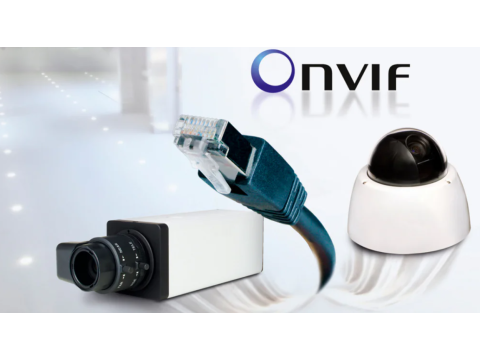IP Surveillance Protocols: ONVIF, RTSP, and HTTP
In the world of IP surveillance, protocols play a crucial role in ensuring smooth communication and integration between devices. They define how data is exchanged and managed within a network of security systems.
Understanding IP Surveillance Protocols
ONVIF (Open Network Video Interface Forum):
ONVIF is a global standard that ensures compatibility between devices from different manufacturers. This simplifies the integration of IP cameras, NVRs, and management platforms into a unified system.Key Benefits:
- Interoperability across brands.
- Simplified configuration and setup.
- Standardized communication protocols.
How It Works:
ONVIF defines APIs and specifications for data exchange, such as video streams, recording settings, and image adjustments. By adhering to these standards, devices ensure seamless interaction.Practical Use:
When selecting equipment, check for ONVIF support to avoid compatibility issues. However, note that not all devices fully comply, so verify specifications before purchasing.
RTSP (Real-Time Streaming Protocol):
RTSP facilitates live streaming by enabling real-time transmission of video and audio data. It works on a client-server model, where a client (e.g., mobile device or NVR) requests streams from an IP camera.Key Features:
- Stream navigation (start, pause, rewind).
- Support for multiple streams (e.g., high-resolution, mobile-friendly).
- Compatibility with RTP for time-synchronized data delivery.
How It Works:
RTSP enables flexible video management by allowing devices to choose specific streams based on bandwidth or display needs.
HTTP (Hypertext Transfer Protocol):
HTTP is widely used for accessing IP camera web interfaces via a browser. It facilitates camera configuration, video playback, and system management.Key Features:
- Client-Server Model: Web browsers request data from the camera’s server.
- Stateless Communication: Each request is independent, ensuring a simple and fast response.
- Versatility: Supports GET, POST, and other methods for data retrieval and updates.
Practical Use:
HTTP is the backbone of browser-based camera interaction, enabling users to access live streams, adjust settings, and perform maintenance tasks.
Why Protocols Matter
- Interoperability: Protocols like ONVIF ensure devices from different brands work seamlessly.
- Efficiency: RTSP and HTTP optimize video transmission and management.
- Scalability: Standardized protocols allow easy expansion of surveillance systems.
Best Practices for Protocol Use
- Check Compatibility: Always verify ONVIF support for hassle-free integration.
- Optimize Streams: Use RTSP streams tailored to your network’s bandwidth.
- Leverage HTTP Tools: Maximize the potential of web interfaces for configuration and monitoring.
Explore a wide range of IP surveillance solutions designed for compatibility and efficiency at safsale.com

